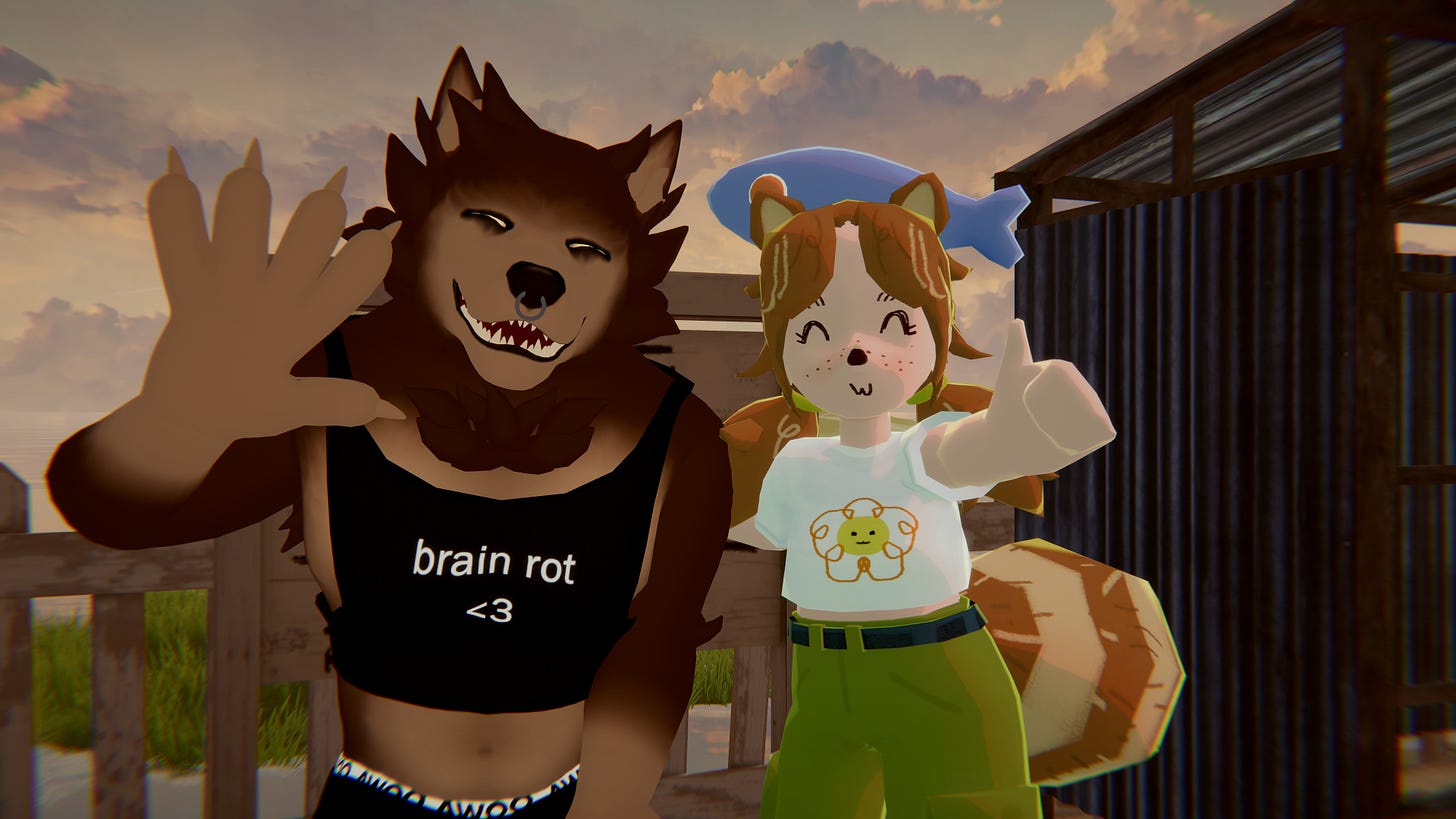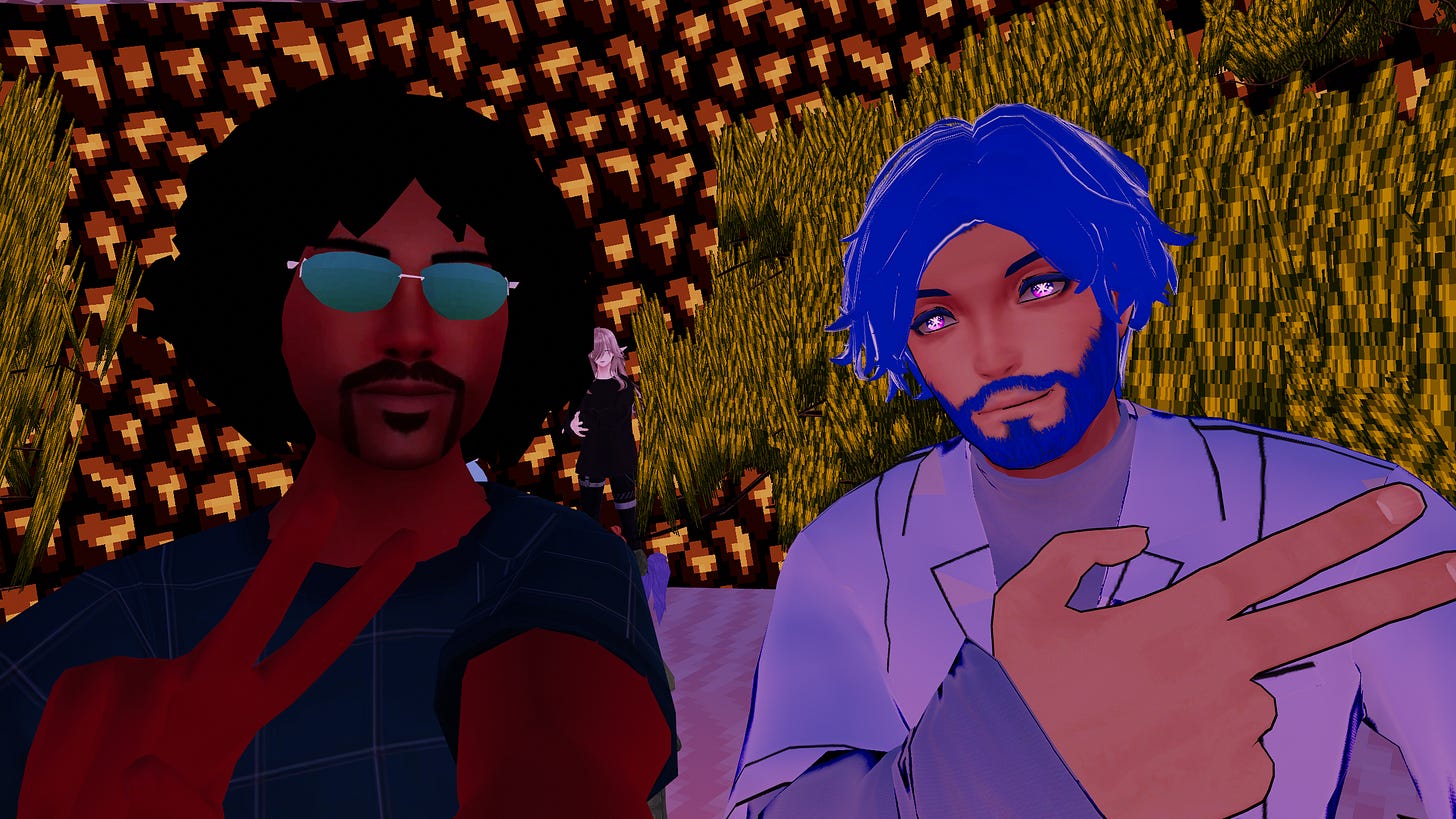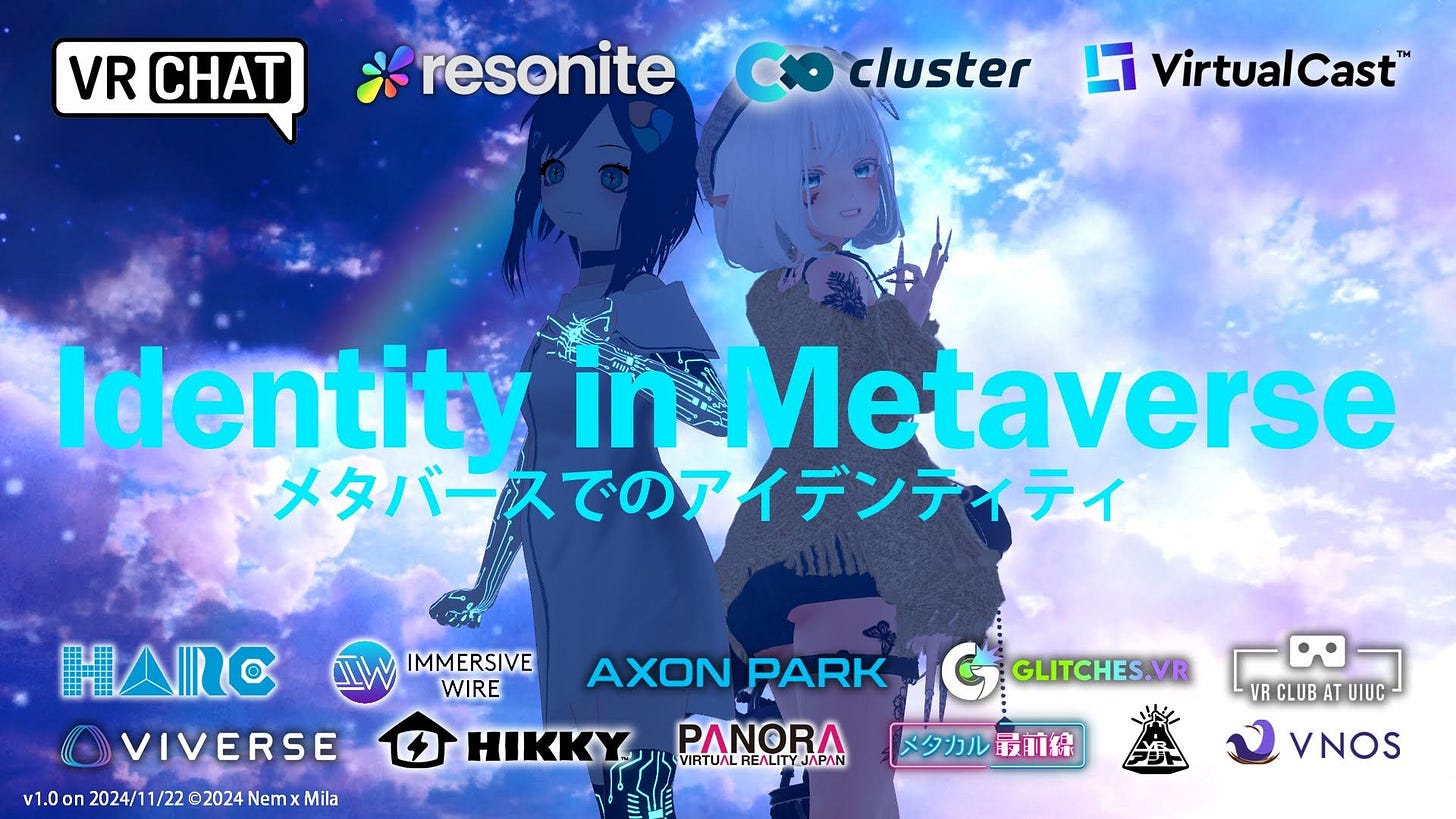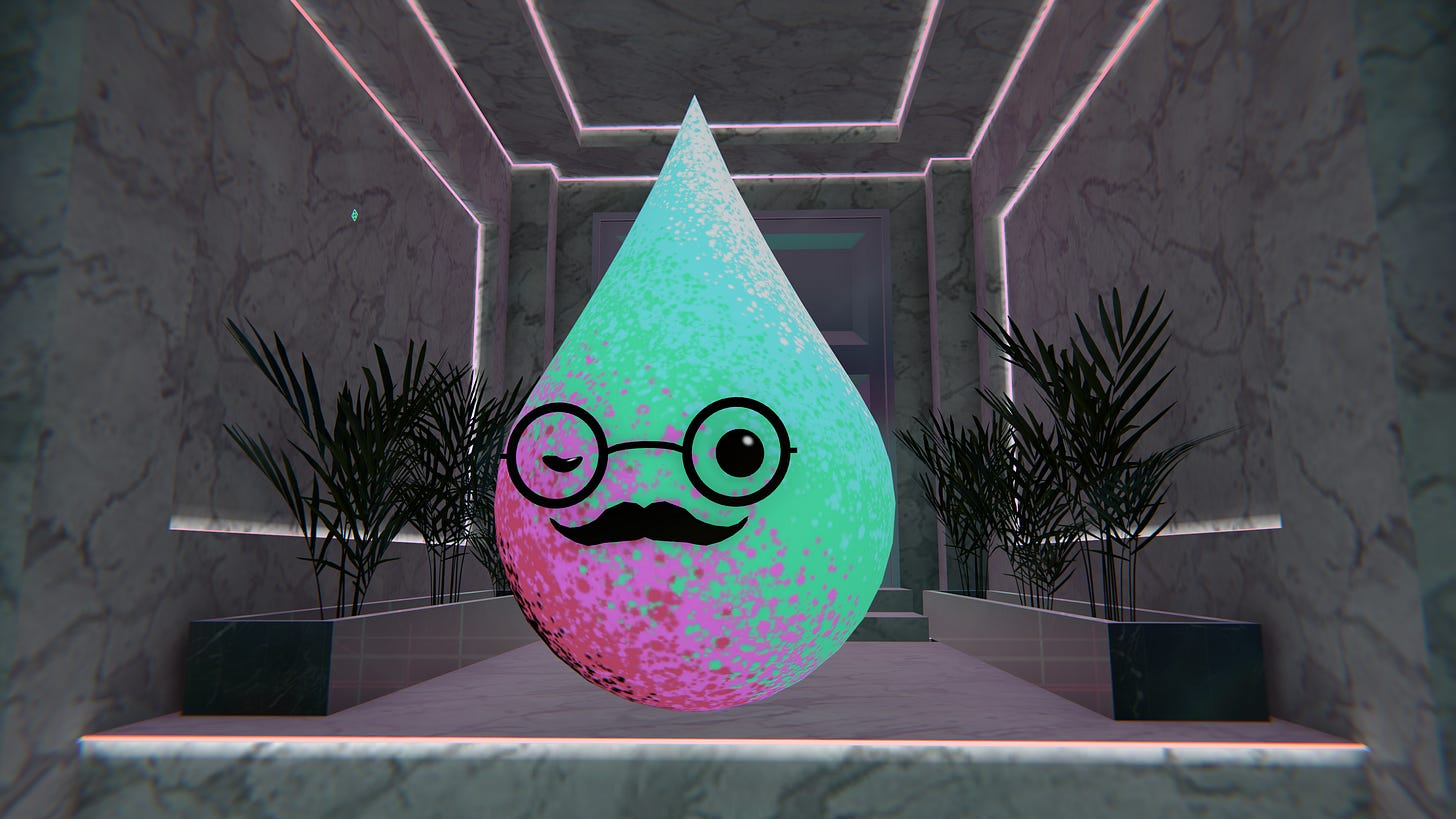A look at ‘Identity in Metaverse’
Our thoughts on Nem x Mila’s report for their ambitious qualitative survey
Hello, has it been a long time since we’ve posted an article? Ooops. Is it nice to see us in your inbox after such a long time? Yeah. We’ve all gotten pretty busy over here at Glitches.VR. Some with work, some with school and most with the crushing weight and expectations of the day to day, you know how it is💚
I’m mustering up the strength and energy today to announce the release of Nem x Mila’s 71-page report “Identity in Metaverse”, which we wrote about earlier this year when they were looking for survey participants. The report provides a lot of insight into social VR users relationship to the metaverse and to the avatars they use.
After a few years of regular VRChat use it’s hard not to notice the connection between avatars and the people who choose to wear them. I try to keep my psychoanalyzing to a minimum, but I love testing out how different avatars make me feel and how they change my behaviour. As an avatar creator I gravitate toward models that are heavily stylized and that fit into my personal aesthetic. Avatars for me are more than personal expression, they are also an extension of my art practice and world building.

Seeing what kind of person resonates with my designs is always fascinating, but it can also be unexpected or misleading. This analysis is a great way to get a broader look at the reasons behind why we choose what we choose. I was surprised by a lot of the results. Especially the avatar age and similarity to physical self. There are only a few people I’m aware of who prefer to look like their physical self, but it’s shocking to see it’s only 4% of social VR users! On the other end of the spectrum, 66% look completely different from their physical world selves (I’m definitely part of the majority here). The different reasons cited for why this is the case is also interesting in how they vary.
It also seems, from Nem x Mila’s analysis, a lot of us are out here just wanting to be cuter. Men being women, women being animals, old men being little girls, we are all on a quest for cuteness. That’s definitely been true for me. My favourite ‘major reason’ in the study is in response to “Why: Juvenile” on page 33:
“To be treated with more affection or mistakes are more easily forgiven”
This is so real. I noticed pretty early on how cute avatars affect me. No matter who is piloting them I have this instinct to coo and protect anyone wearing a tiny little guy, at least for a little while. Simultaneously it can be hard to be taken seriously or have any kind of authority when you’re small and cute. But I guess if that’s not your goal then it’s worth the trade off. Most of my avatars are shorter than average and have large eyes with cute features. I think having that kind of appearance helps me get away with a lot more than I could otherwise! (Teehee)

Our resident scientists, ArmaniXR and Peter Pipetter, have been avid supporters of Nem and Mila’s research and were happy to share their thoughts on the results as well.
Armani: “For me, this report synthesizes multiple facets of humanity’s existence so far in social virtual reality, ultimately discovering our hunger for freedom through fuller inward and outward expressions. It is evidence that social VR allows these facets of humanity to be explored with greater freedom, making deeper connections to selfness ranging from more subjective linkages like "cuteness" to more objective linkages like physical size and shape. It is also evidence of social VR allowing users to view themselves across realities, peering inside to express themselves to themselves as much as they do outside of themselves to others, and finding a clearer view of their identity. This evidence is validating and anyone in social VR will find it validating once they explore the report for themselves.”
Peter: "What I've learned from this report that intrigues me is the amount of individuals that express or acknowledge their VR identities amongst peers and families that reside in their physical space. The responses, made clear in the survey, reassure me that we are slowly becoming more aware and accepting of people uniquely expressing their sense of self through the medium of virtual reality."
This report, and other research like it, helps us validate thoughts and experiences that are still relatively new to the human experience. It can also help us identify patterns in a platform and give us context for how the cultures in social VR might be shifting. It’s also an excellent opportunity for social VR users to look at research that impacts them and better understand the process behind statistics. The way Nem and Mila have designed their report is super inviting and transparent. They’ve also managed to provide enough context and graphic elements to be useful without it feeling too overwhelming.
Anyhoo! Give the whole thing a read on Nem’s medium page and see for yourself.







